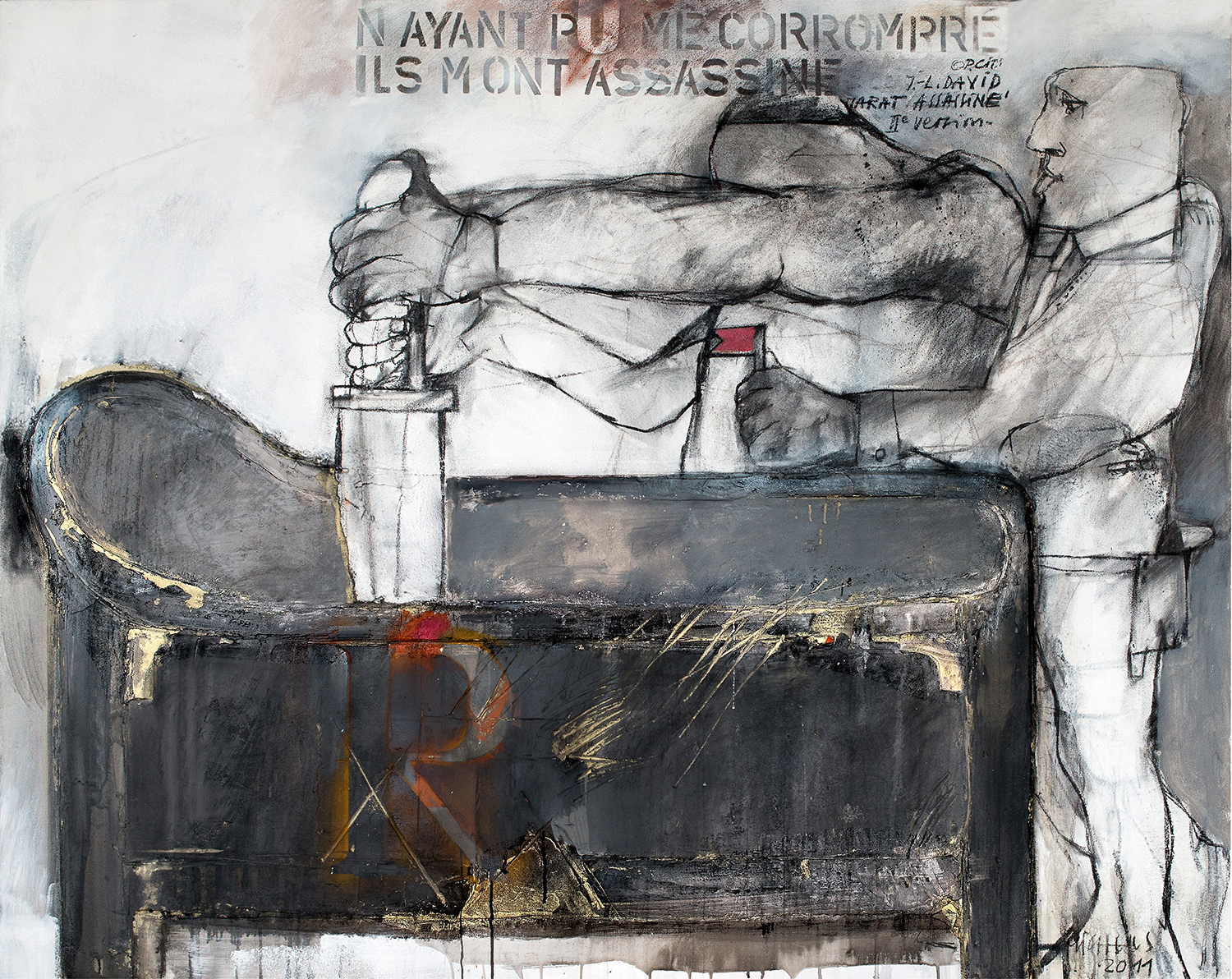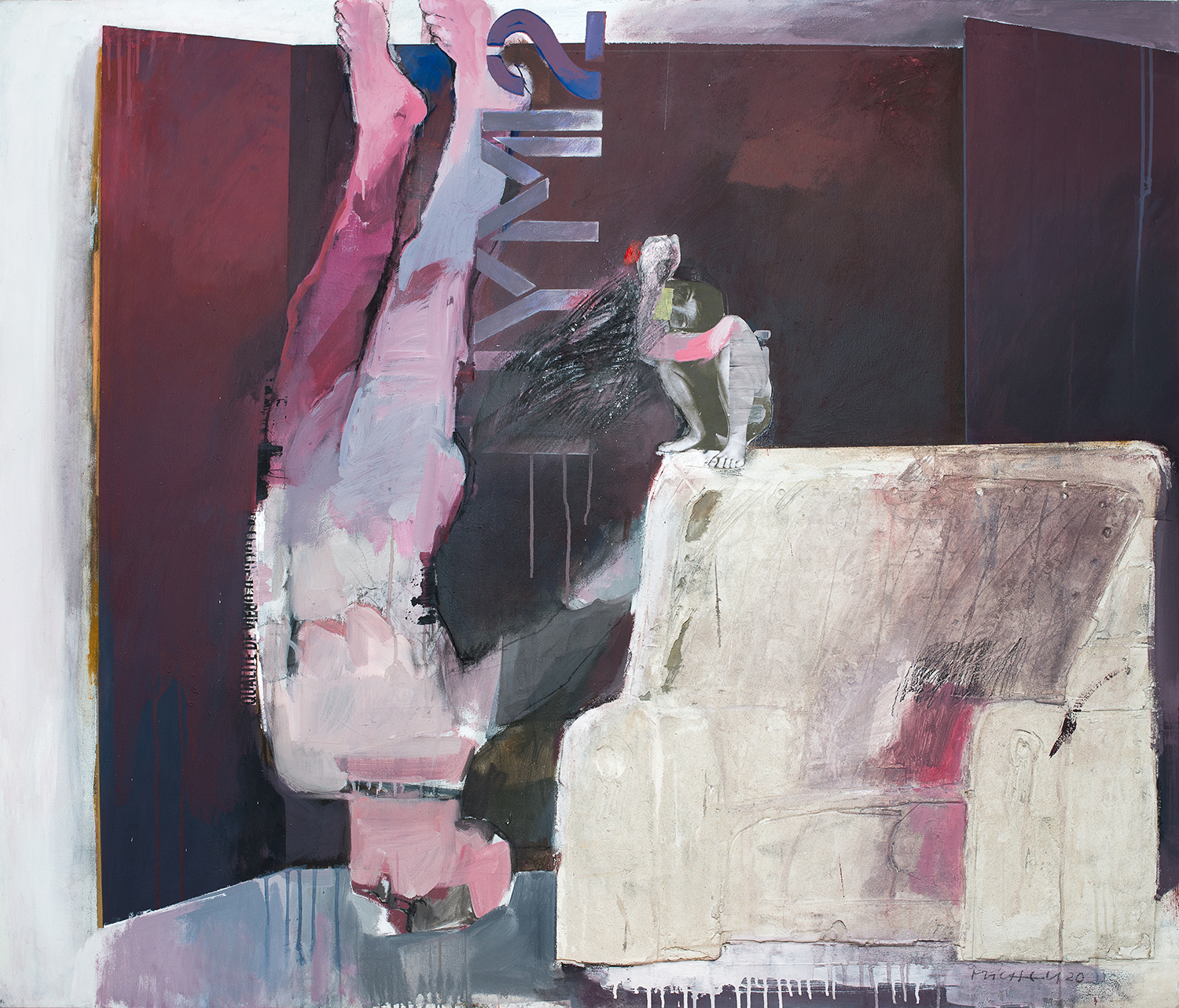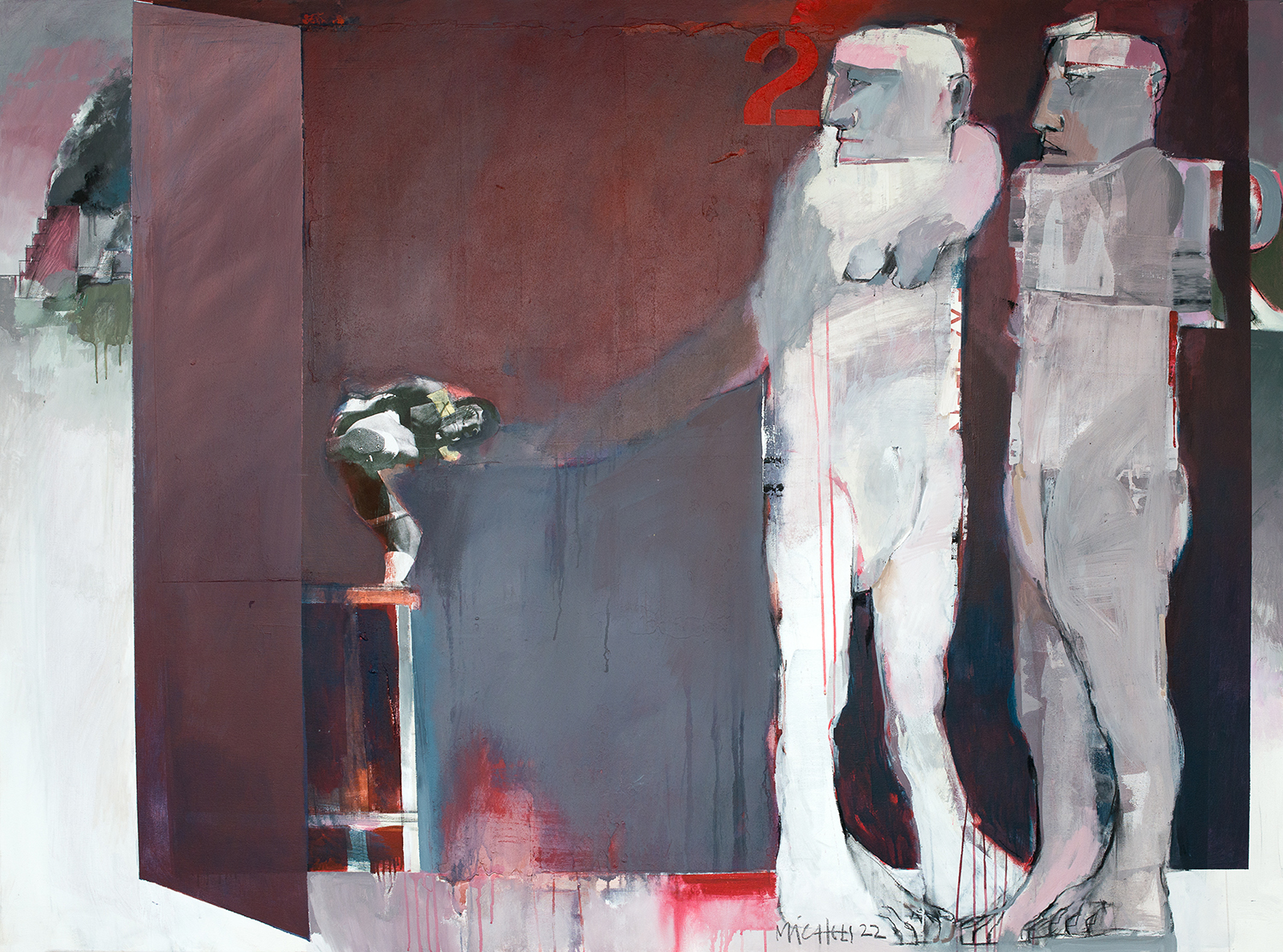




Profil
Né à Drauffelt, Luxembourg
Vit et travaille à Bergem, Luxembourg et à Puyvert (Luberon), France
Les figures de Michels sont captives, enserrées dans un lourd étau d’entraves et de jougs, mises en scène, en pierre ou en bière dans une terrifiante imagerie de la claustration. Introduisant une autre exposition ala galerie Simoncini (2007), Paul Bertemes relevait «der Mensch als Silhouette gefesselt, der Freiheit beraubt, wie eine Mumie eingebunden». Il soulignait ces «skizzenhaft angedeutete, im Raum hängende, gekreuzigte, in Behälter eingezwängte Körper – der Mensch entwürdigt, eingeschlossen in eine morbide, diffuse Räumlichkei», pour conclure que «nirgendwo ist überall, Fluchtwege sind ausgeschlossen».
Les «eingezwängte Körper» font songer à la légende d’Antigone, enterrée vivante par Créon le rai de Thèbes. Ou, pour qui préfère des référents cinématographiques aux récurrents mythologiques, à cette pratique de la mafia consistant à couler ses ennemis dans le béton de quelque chantier en voie d’achèvement. Contre quelle mafia Michels est-il en lutte? De quel mal ses toiles sont-elles la métaphore, et de quelle emprise ses figures sont-elles captives?
Michels, qui lors de ses séjours en Provence se plait à saluer la tombe d’Albert Camus, figure un homme «absurde», et pourrait faire sien le décret selon lequel «aucune morale, aucun effort ne sont a priori justifiables devant les sanglantes mathématiques de sa condition». Il y a de la sidération dans ses toiles, de l’accablement et de la stupéfaction, comme si ses figures suffoquaient sous le poids de leur propre étrangeté. C’est, cependant. la sidération qui prélude aux grands ébrouements: dans l’absurde camusien Michels puise la sève d’une insurrection, et son homme absurde bien vite devient homme révolté, Révolté face a «une société de plus en plus technocratique et autoritaire, dans laquelle la désintégration de l’autonomie individuelle et de la personnalité avancent à grands pas», Michels, qui par ailleurs cite André Gide – de monde ne sera sauve, s’il peut, que par les insoumis» – se dit en résistance pour sa part face a «une société de l’asservissement et de la déculturation», Les chiffres et lettres dont il parsème ses toiles sont des signifiants de cet asservissement, de la “bureaucratisation», de la mise en fiches, de la mise en boite et, in fine, de I’«extermination» de l’homme.
Texte : Gaston Carre, Extrait du livre : Un homme et son œuvre, Imprimerie Centrale 2009
Profile
Born in Drauffelt, Luxembourg
Lives and works in Bergem, Luxembourg and Puyvert (Luberon), France
Michels’ figures are captive, gripped in a heavy vise of fetters and yokes, staged in stone or coffin in a terrifying imagery of confinement. Introducing another exhibition at the Simoncini gallery (2007), Paul Bertemes noted “der Mensch als Silhouette gefesselt, der Freiheit beraubt, wie eine Mumie eingebunden”. He underlined these “skizzenhaft angedeutete, im Raum hängende, gekreuzigte, in Behälter eingezwängte Körper – der Mensch entwürdigt, eingeschlossen in eine morbide, diffuse Räumlichkei”, to conclude that “nirgendwo ist überall, Fluchtwege sind ausgeschlossen”. The “eingezwängte Körper” bring to mind the legend of Antigone, buried alive by Creon, king of Thebes. Or, for those who prefer cinematic references to mythological recurring ones, to this mafia practice consisting of sinking its enemies into the concrete of some construction site nearing completion. Which mafia is Michels fighting against? Of what evil are his paintings the metaphor, and of what influence are his figures captive?
Michels, who during his stays in Provence likes to salute the grave of Albert Camus, represents an “absurd” man, and could endorse the decree according to which “no morality, no effort is a priori justifiable in the face of bloody mathematics of his condition. There is astonishment in his paintings, dejection and amazement, as if his figures were suffocating under the weight of their own strangeness. It is, however. the astonishment which preludes the great upheavals: in the Camusian absurdity Michels draws the sap of an insurrection, and his absurd man very quickly becomes a rebellious man, Revolted in the face of “an increasingly technocratic and authoritarian society, in which the disintegration of individual autonomy and personality are advancing with great strides”, Michels, who also quotes André Gide – people will only be saved, if they can, by the rebellious” – says he is in resistance for his part in the face of “a society of enslavement and deculturation”, The numbers and letters with which he sprinkles his canvases are signifiers of this enslavement, of “bureaucratization”, of the putting in cards, of the boxing and, ultimately , of the “extermination” of man.
Text: Gaston Carre, Excerpt from the book: A man and his work, Imprimerie Centrale 2009



